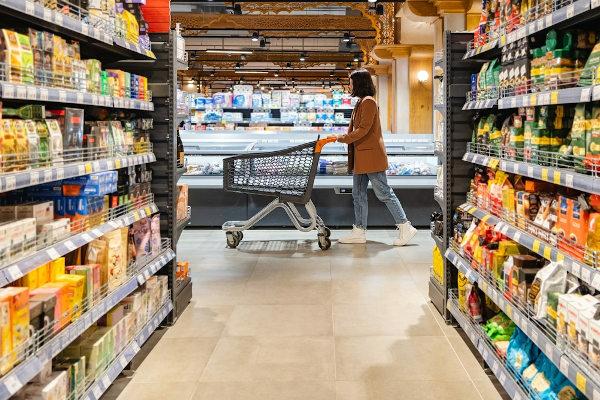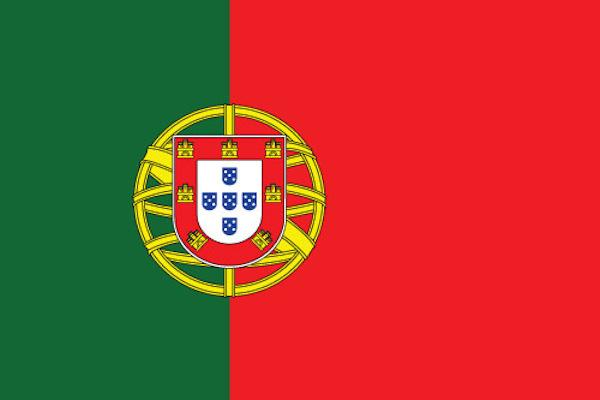free market It is an economic model whose main characteristic is the non-intervention of the State in the economy. Originating from the doctrine of economic liberalism, the free market forms the basis of capitalist system and is guided by the law of supply and demand. The exchanges that take place within its scope are voluntary, that is, they take place according to the will and availability of economic agents (individuals, banks, companies).
Unlike planned economies, in the free market model the regulation of the system is carried out through its own internal mechanisms, thus configuring the self-regulation of the market.
Read too: Commodities — commodities traded on stock exchanges according to supply and demand
Topics of this article
- 1 - Summary on free market
- 2 - What is free market?
- 3 - Laissez-faire and the concept of free market
- 4 - What are the characteristics of the free market?
- 5 - How does the free market work?
- 6 - The free market in Brazil
- 7 - What are the advantages and disadvantages of the free market?
- 8 - Differences between free market and socialism
- 9 - Solved exercise on free market
free market summary
The free market is an economic model characterized by non-intervention by the State in the economy. Economic and commercial exchanges take place on a voluntary basis.
It works based on the law of supply and demand and market self-regulation.
It represents one of the pillars of the capitalist system.
It is present in the doctrine of economic liberalism, which has Adam Smith as one of its main theorists.
It presents some advantages, such as the freedom of action of economic agents and the productive improvement caused by the competitiveness between companies.
Among its disadvantages is the fact that it deepens socioeconomic inequalities and contributes to the precariousness of work in certain branches of the economy.
The role of the state in the economy is what differentiates the free market from socialism. In the second system, production and the functioning of the market are directed by the State.
What is free market?
The free market is the basic principle of economic doctrine known as economic liberalism. It can also be described as an economic model that argues that the economy should be regulated through its own internal mechanisms, without the intervention of public agents and policies promoted by the State. In this sense, commercial exchanges and market transactions are carried out according to the will of the individual and/or companies, that is, on a voluntary basis.
Do not stop now... There's more after the publicity ;)
Laissez-faire and the free market concept
Due to the characteristics listed above, the free market is often described by the French expression laissez-faire, directly related to the doctrine of economic liberalism and which literally means "let it be". Initially applied by the physiocrats to describe an ideal economic system, without State interference, the expression laissez-faire it was also incorporated by important names in liberal thought, such as Adam Smith (1723-1790) and John Stuart Mill (1806-1873).
The free market is, therefore, an economic model that performs and prospers, to a large extent, in the capitalist system - based on the guarantee of profit, the division of society into classes and private property, in addition to the self-regulation of the market.
See too: What is financial capitalism?
What are the characteristics of the free market?
The main characteristic of the free market, and which guides all thinking and liberal doctrine, and the absence of state action on issues concerning the functioning of the economy. The circulation of goods, commercial exchanges, the definition and fluctuation of prices, the directing of private investments and all other activities carried out in the economic environment are guided by their own mechanisms, and governments and, to a greater extent, the State do not participate in any of these exchanges, according to the model of free Marketplace.
In the system where the free market prevails, competition between companies happens freely, which, in theory, increases the degree of competitiveness and instigates improvements in the product and in the production process, or in the services offered to society.
How does the free market work?
The functioning of the free market can be explained in a simplified way through the law of supply and demand (or demand). According to this law, the prices of goods and services are determined by their availability in the market and by the demand, generated by the potential consumers of that item or set of services.
In practical terms, when the volume available in the market is greater than demand, prices fall. On the other hand, the scarcity of a certain product or the supply of a service, when faced with greater demand, causes an increase in prices.

In a market economy, it works, therefore, through self-regulation mechanisms. These mechanisms are what Adam Smith called the “invisible hand” of the market, responsible for guaranteeing market equilibrium. economy and for restoring order in the event of disturbances that affect the progress of the economy in a given local. It is also important to reinforce the notion that the exchanges that take place are voluntary, and the State or any type of public agent does not participate in decisions.
The free market in Brazil
The challenges for greater liberalization of the Brazilian economy, guided by the mechanisms market self-regulators, are the subject of intense debates in academia and Brazilian society as a whole. The implementation of liberalism in the national economy happened, from the beginning of the 19th century,with the opening of portsand greater freedom with regard to foreign trade.
The occurrence of a deep economic crisis international community during the 1930s and the impacts it had on the country made the State started to act in a more present way in the regulation of part of the economy, a pattern that remains until the present day. current. Going forward, we would have to adopt measures neoliberals at the end of twentieth century, a period marked by the internationalizationof Brazilian market, in addition to the significant entry of companies and foreign investments into the national territory.
Today Brazil appears in position 127 of the Index of Economic Freedom, a ranking led by Singapore and Switzerland. Although free market mechanisms are present in the Brazilian economy, a World Bank analysis indicates that macroeconomic instabilities, which reverberate over the economy as a whole, are the main factors that prevented and still prevent further progress of the free market in Brazil.
Know more:Main differences between capitalism and socialism
What are the advantages and disadvantages of the free market?
Advantages of the free market: the free market is a system that guarantees the freedom of action of economic agents, which can be individuals, banks, companies or conglomerates. Its operation guarantees a greater diversity of products and services available for society to choose, in the same way that it stimulates the implementation of improvements in companies to offer goods and services with higher quality, making companies more competitive.
Disadvantages of the free market: the way the free market works negatively impacts those producers with less financial resources and less access to credit with private banks, being prevented from competing equally with large companies. The same happens on a large scale in the context of the international division of labor, in which underdeveloped countries end up being left out of this system. The complete absence of State policies also ends up deepen the socioeconomic inequalities and cause problems such as precarious work.
Differences between free market and socialism
free market: is based on the non-intervention of the State in economic activities. This means that public agents and governments must not interfere in commercial transactions and economic and financial operations that take place, and their functions in the territory and in the society. The free market develops in the capitalist system of production.
Planned economy (socialism): is present in socialist system and, unlike the free market, it is characterized by the centralization of productive activities and economic regulation policies in the State. In this system, public power and state-owned companies are the most active, while private companies have limited or non-existent action. Other important aspects of the socialist economy are the regulation of production and the standardization of prices. Therefore, the self-regulation of the market, characteristic of liberalism, does not exist.
Solved exercise on free market
Question 1) (Enem 2020) In a world like ours, on the one hand marked by the fluidity of space, issues related to circulation become become even more relevant and, with them, the situation of one of the most emblematic components of the territories: their Limits. And this is where one of the great paradoxes of contemporary geography arises: alongside globalized fluidity, closures also appear, attempts to control the movement of people.
HAESBAERT, R. From multiterritoriality to new walls: paradoxes of contemporary deterritorialization. Available at: www.posgeo.uff.br. Accessed on: 2 Jan. 2013 (adapted).
The text addresses a striking paradox of the contemporary world that consists of the opposition between:
a) supranational blocs and transport inefficiency.
b) free market and construction of border barriers.
c) information technologies and structural unemployment.
d) industrial deconcentration and concentration of capital.
e) reduction of poverty and increase of social inequality.
Resolution:
Alternative B. The paradox of the globalized world exposed by Haesbaert in the excerpt of the statement is formed by the freedom of the market — which intensified the flow of goods and investments around the world — and the maintenance of border barriers of national territories — that prevent or hinder the free movement of people.
By Paloma Guitarrara
Geography Teacher
Adam Smith, biography of Adam Smith, who was Adam Smith, the life of Adam Smith.
Click here to access and learn more details about capitalism. Understand how this economic system emerged, its characteristics and disadvantages.
Click on the link and access to understand the most basic differences between capitalism and socialism, two antagonistic economic systems.
Access this link to understand what liberalism is, both in the political and economic spheres, what is the history of this thought and how it was consolidated in the world.
Click here, understand what economic liberalism is and find out how this economic doctrine emerged and who its main thinkers are.


